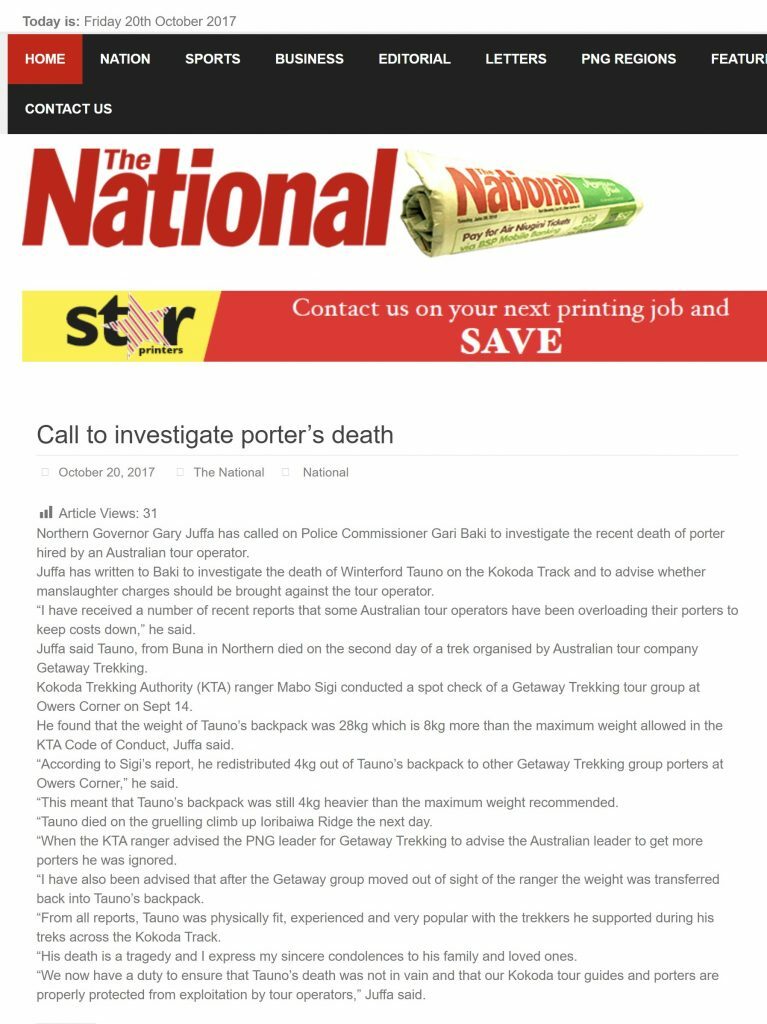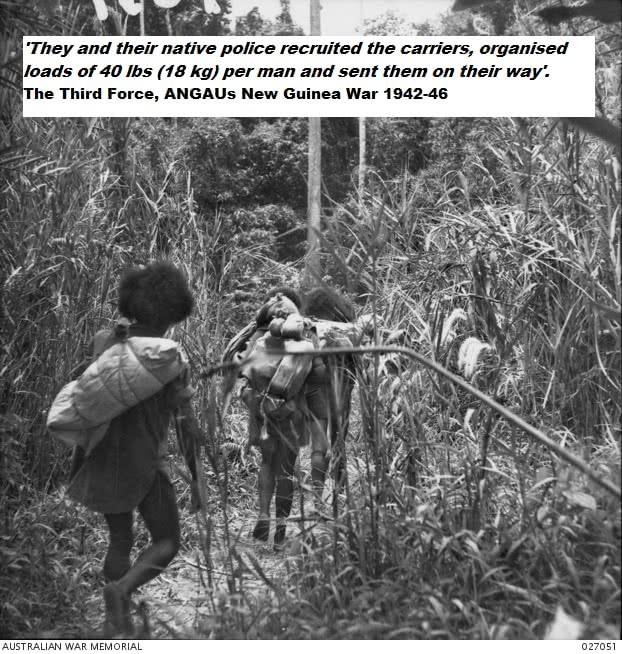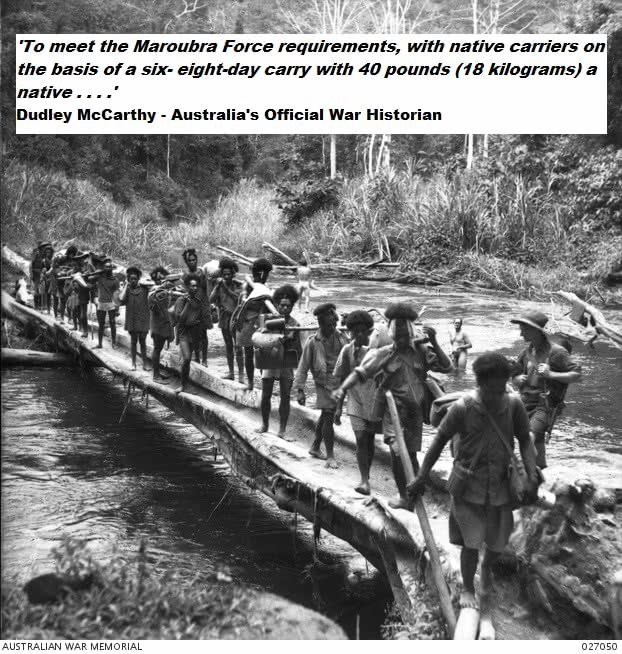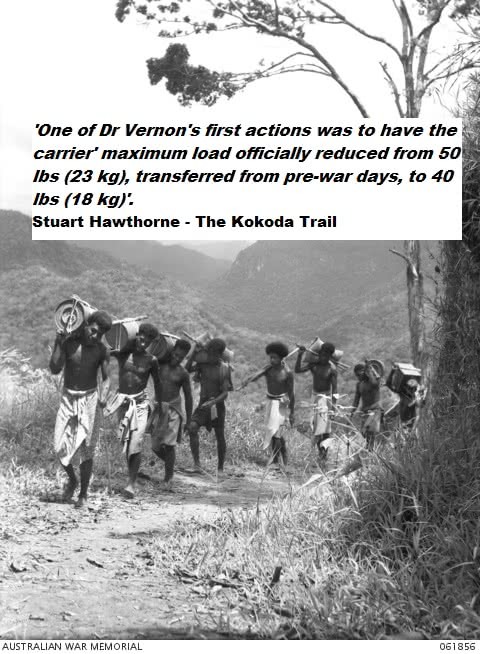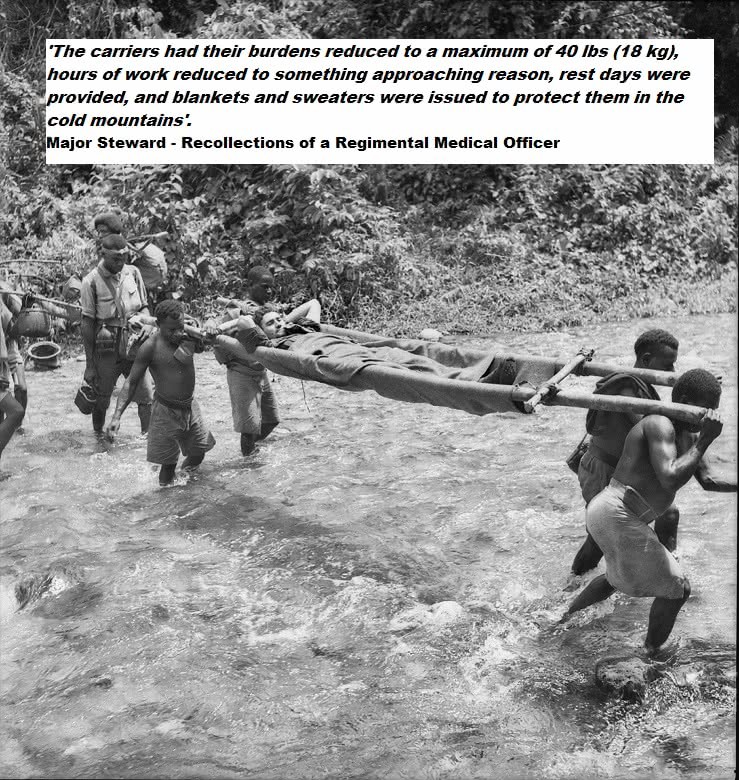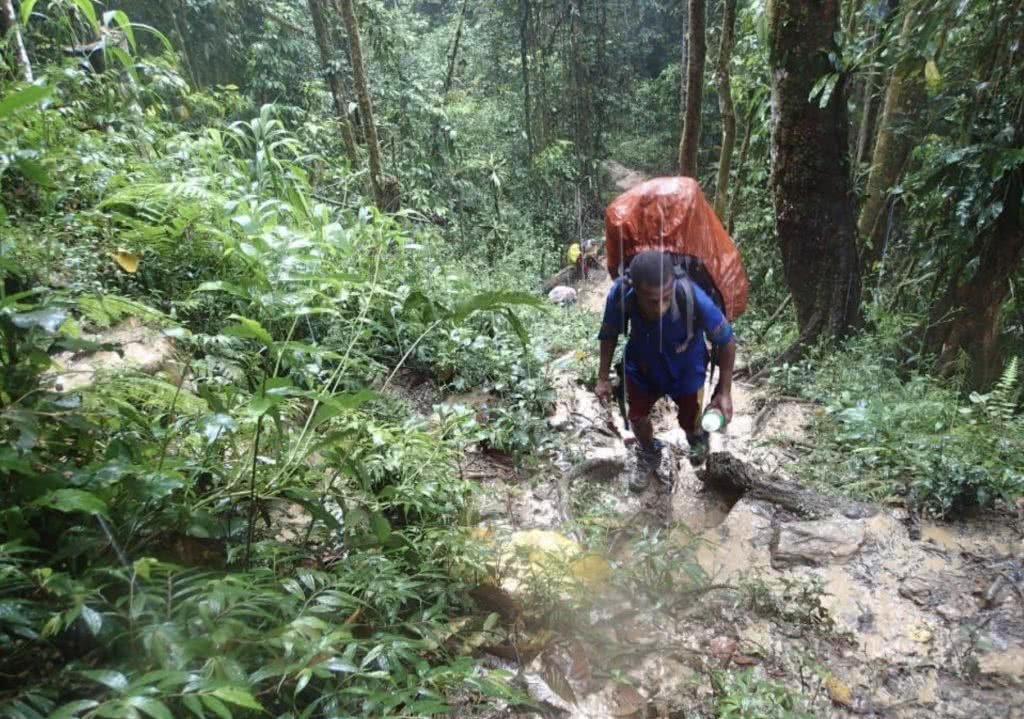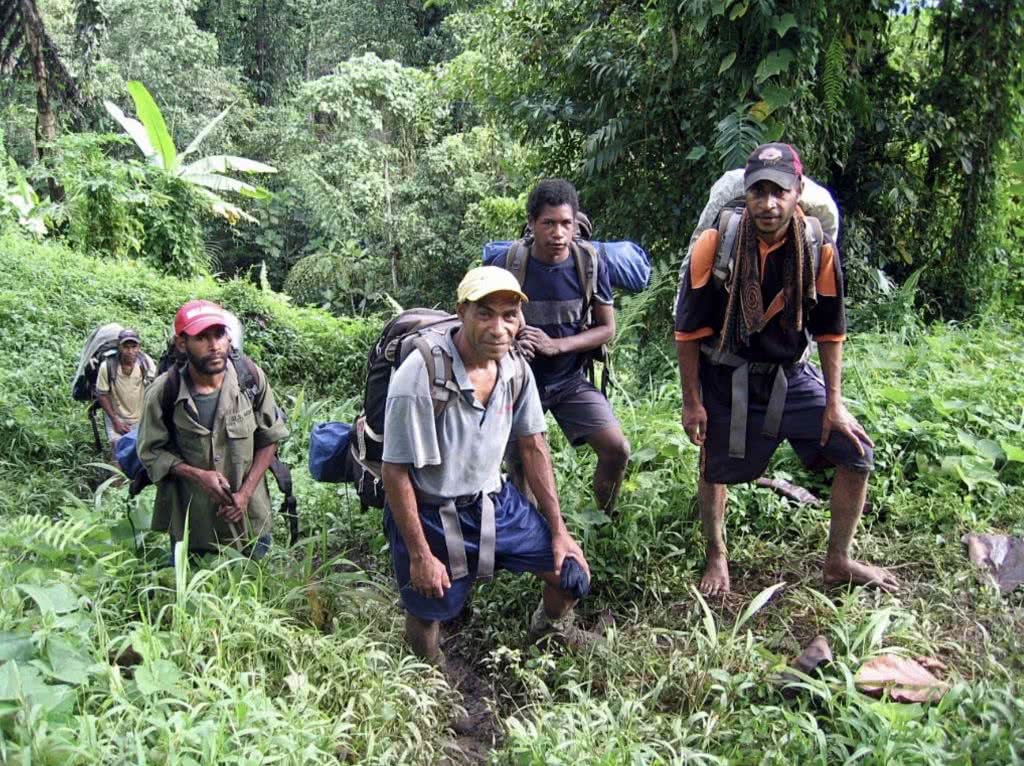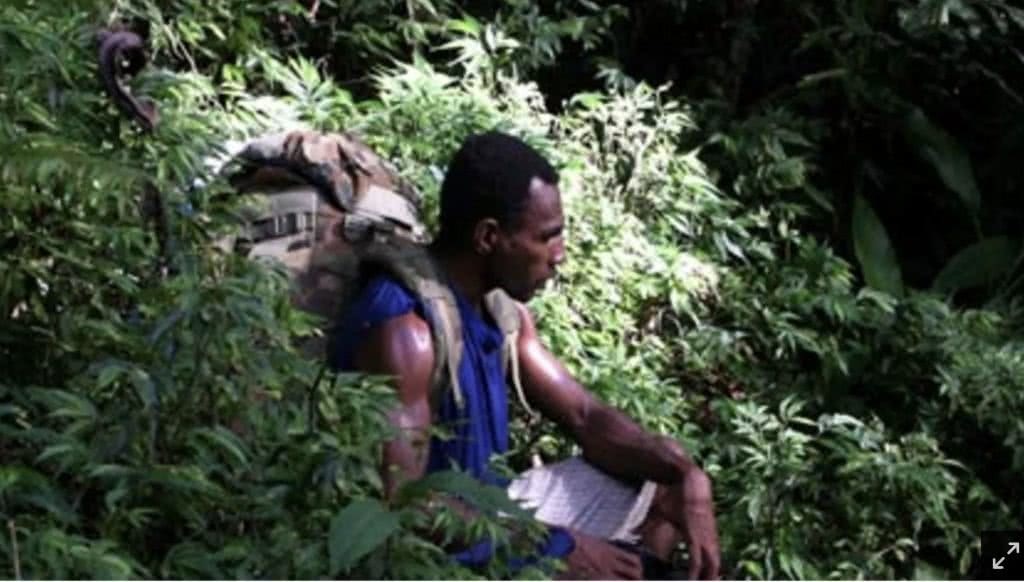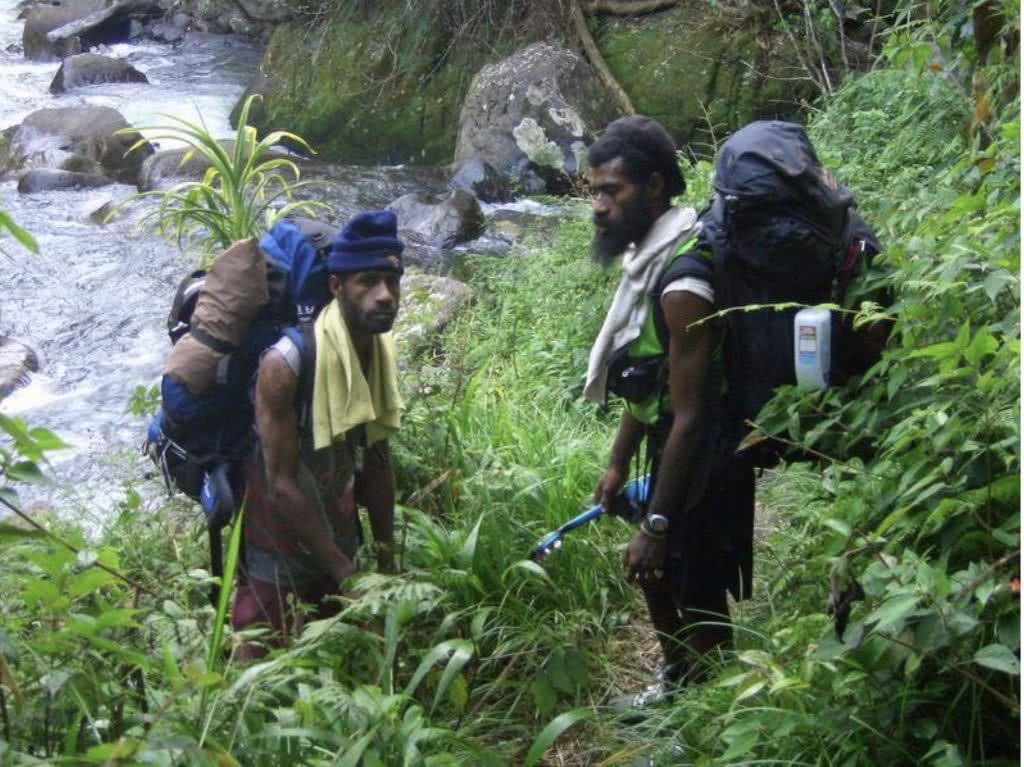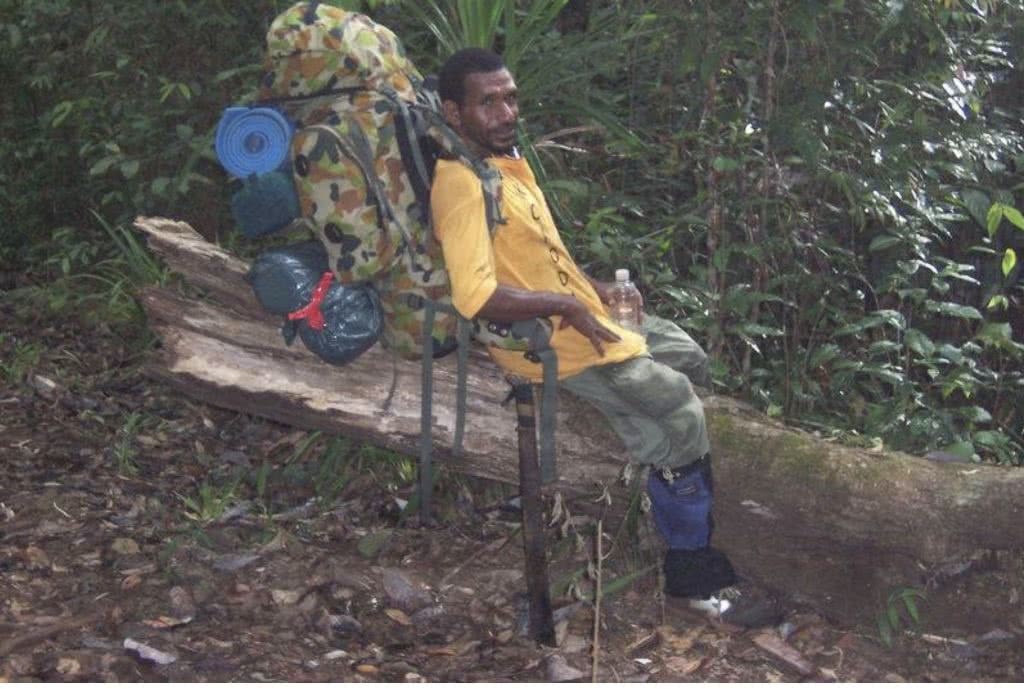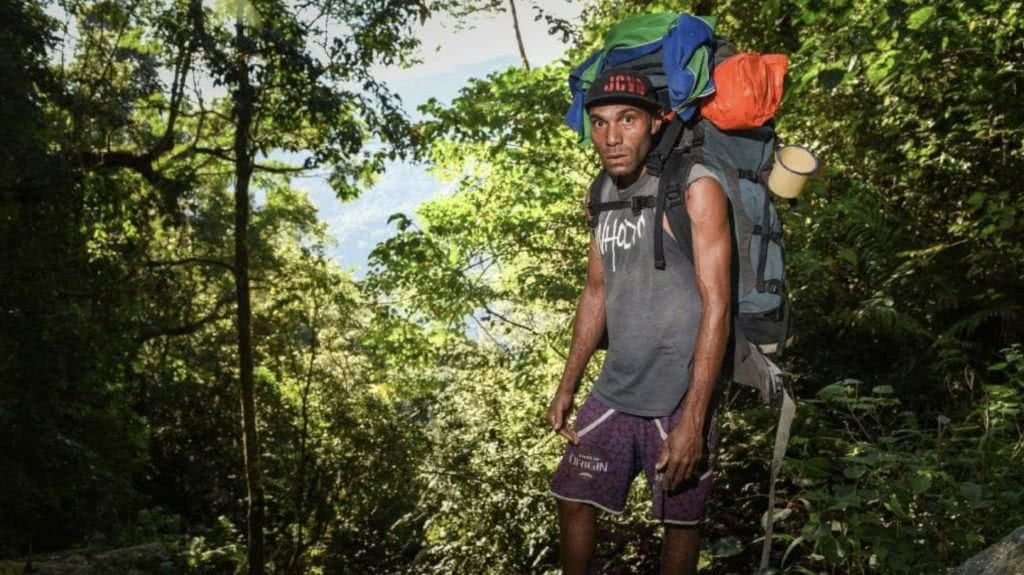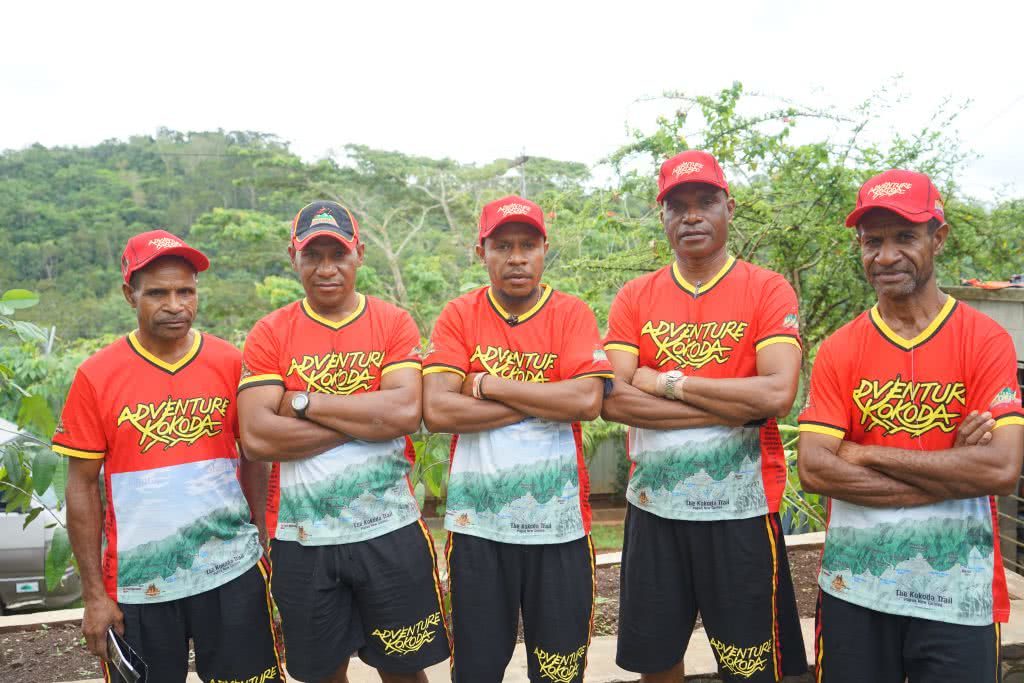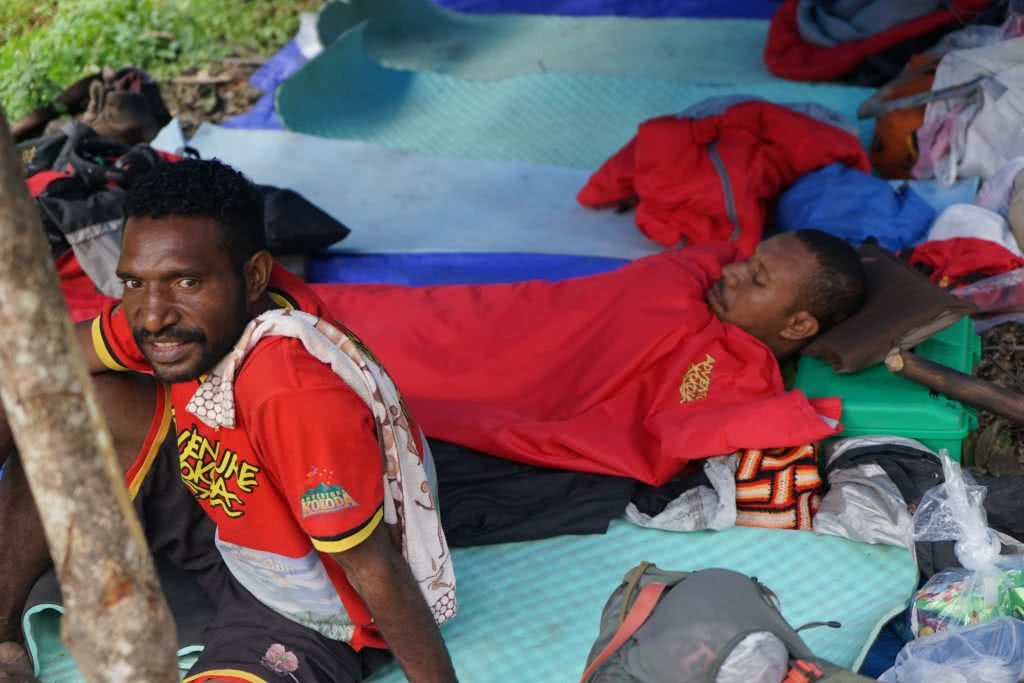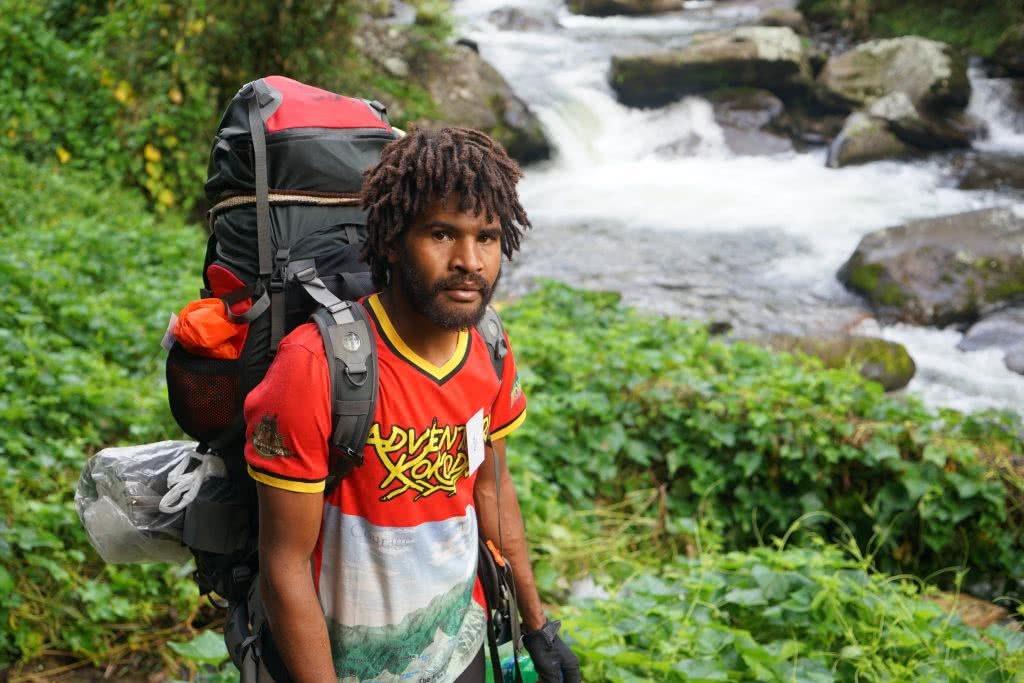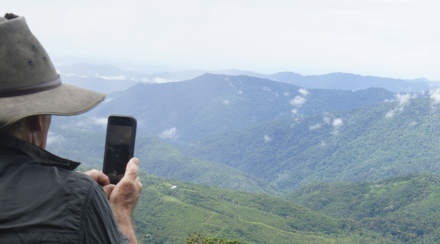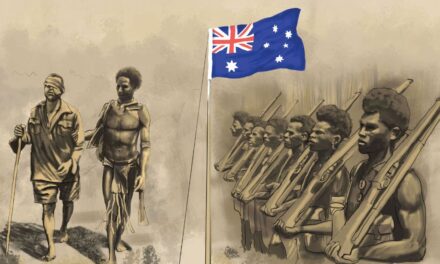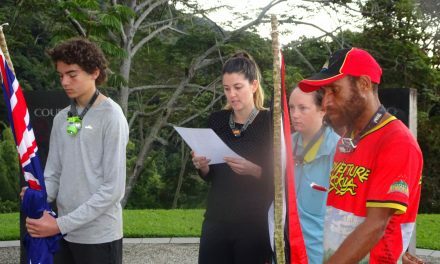The Kokoda Tour Operators Association (KTOA) is a shameless Australian lobby group established to cash in on the Kokoda trekking industry and protect their business interests in Papua New Guinea
They operate illegally in PNG as all but one of their 8 members are not registered as a ‘Foreign Enterprise’ in PNG in accordance with the Investment Promotion Authority (IPA) Act. The one that is registered has not filed an Annual Return as required by the Act for more than a decade.
This allows them to effectively avoid their taxation obligations in PNG.
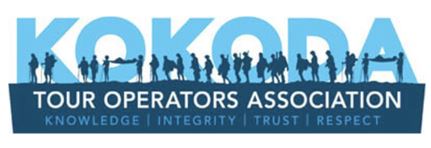
The Kokoda Tour Operators Association (KTOA) has capitalised on the notoriously weak management structure put in place by Australian environmental officials which has seen trekker numbers crash by 42% since they took control of the Kokoda Trail in 2009 – the ‘law of the jungle’ has prevailed since then.
PNG officials working in the Kokoda Track Authority (KTA) management office are susceptible to outside influence as they have no qualifications in management, tourism, trekking or commemoration. They have never published an annual financial report, so nobody has any idea where the money they collect for trek fees goes. They have not been able to work how to set up a ‘campsite booking system’, a ‘trek itinerary management system’, a ‘trail maintenance system’, a ‘welfare system for PNG guides and porters’, etc etc.
They are therefore vulnerable to influence by lobby groups who can wine, dine, bribe, or bully as appropriate to protect their interests.
This was on full display when a PNG delegation attended a KTA forum in Cairns on 14-15 November 2017.
The previous week a forum attended by PNG stakeholders In Port Moresby on 8 November 2017 had unanimously agreed that guides and porters engaged by most Australian tour operators were being overloaded, underpaid and poorly equipped. They approved a motion which called for:
- a maximum weight of 18 kg be imposed for guides and porters,
- a minimum rate of K70 per day plus a K70 bonus at the end of each trek,
- the issue of a trek uniform comprising a cap, shirt and shorts printed with the company’s name and logo, and
- the issue of a zippered sleeping bag and mat.
Their call for a reduction of the maximum weight was motivated by the death of one of their own porters on the second day of his trek earlier in the month. According to the KTA Ranger who had weighed the packs the day before his pack came in at 28 kg. The Ranger directed that the weight be redistributed however he was informed that as soon as the trek group was out of sight the weight was put back in the original packs.
The Governor of Oro Province called for an investigation into the matter in the PNG National newspaper. The Australian operator, who was also the President of the KTOA, responded aggressively by accusing the KTA Ranger of ‘doctoring the books‘. The KTA yielded to the pressure and failed to investigate the matter despite a finding by the local Police Sergeant that:
‘It is evident that the group on this particular trip . . . engaged by . . . (KTOA tour operator) . . . were all overloaded in breach to Code of Conduct stipulated under this code’.
Rather than accepting that there is a problem with the overloading of porters the KTOA went into damage control after they were advised that the maximum weight allowed for the Papua and New Guinea wartime carriers in 1942 was 18 kg.
On 26 February 2018 the KTOA posted an irrational response to this fact on their Facebook page:
‘Any operator[i] continuing to use references to conditions and weights carried by carriers on the Kokoda Track in 1942 is still living in the dark colonial days long past. Clearly the welfare of the carriers of the Kokoda campaign was not of primary concern of their colonial masters.
‘Suggestions made recently that the carriers during the war were restricted to carrying 18kgs is a gross misrepresentation of the brutal conditions in which the carriers worked.’
The reference quoted by the KTOA to justify their exploitation of PNG porters was an unofficial essay written by a junior summer vacation student at the Australian War Memorial!![ii].
The facts are anything but a ‘gross misrepresentation of the brutal conditions in which the carriers worked’ as stated by the KTOA!
The most authentic research on the history of the Kokoda Trail was published by Stuart Hawthorne in 2003[iii]. Hawthorne provides a detailed assessment of the reality of the conditions under which the wartime carriers worked and noted that:
‘One of Dr Vernon’s[iv] first actions was to have the carriers’ maximum load officially reduced from 50 lbs (23 kg), transferred from pre-war days, to 40 lbs (18 kg)’.
The maximum weight of 18 kg for wartime carriers is also referred to in a book titled ‘The Third Force. ANGAU’s New Guinea War 1942-46’[v]:
‘They and their native police recruited the carriers, organised loads of 40 lbs (18 kg) per man and sent them on their way’.
The KTOA was not deterred by these facts and responded with more fake research on 10 March 2018:
‘In the Kokoda Museum we read that during the war Porters had to carry up to 27kg. So someone must be right (obviously the KTOA) and someone must be wrong (obviously Adventure Kokoda) about what porters carried.’
The reference they relied upon for this revelation was a photographed extract attributed to Major H.D. (‘Blue’) Steward, Regimental Medical Officer, 2/16 Australian Infantry Battalion which read:
‘The Australian New Guinea Administrative Unit (ANGAU) recruited carriers for the Australian Army. Although better treated, these ‘Fuzzy Wuzzy Angels’, as they were affectionately known, worked long hours in tortuous conditions, often carrying loads of 60lb (27 kg).’
This is a fake reference – there is no record of this statement in Major Steward’s book ‘Recollections of a Regimental Medical Officer’. In his published recollections Major Steward wrote:
‘Medical care for the people of Papua and New Guinea was usually not a direct responsibility of mine, close though I was to them in their gallant work of carrying out our wounded on the Kokoda Trail. In those days they were grossly overworked and overloaded, as well as being underfed and ill-clothed. It was largely through medical advice – including that of old Dr Vernon – that their lot improved. The carriers had their burdens reduced to a maximum of 40 lbs (18 kg), hours of work were reduced to something approaching reason, rest days were provided, and blankets and sweaters were issued to protect them in the cold mountains.’[vi]
Major Steward’s recollections are supported by Australia’s official war historian, Dudley McCarthy, who wrote:
‘General Rowell soon afterwards told General Blamey that, at 29th August, the daily maintenance requirements of Maroubra Force was 15,000 pounds (and that of Kanga Force 5.000 pounds). To meet the Maroubra Force requirements, with native carriers on the basis of a six- to eight-day carry of 40 pounds (18 kilograms) a native, would necessitate the use of at least 3,000 carriers, without allowing for the porterage of their own rations, wastage among them and other possibilities.’[vii]
These historical facts are a matter of record and any attempt by the KTOA to reinterpret them to justify their ongoing exploitation of PNG porters on the Kokoda Trail is a disgrace.
Their defiance is evident in the following statement on their Facebook post of 10 March 2018:
‘One thing is for sure that the KTOA have all agreed to have a maximum total weight of 22.5 kg.’
Well of course they would. That means they do not have to employ as many porters as they should and they get to pocket more money for themselves!
Perhaps somebody should inform them that ‘blackbirding’ – an abhorrent practice involving the recruitment of Melanesian islanders to work as slave labour on Australian farms – was abolished at the turn of the last century. According to a book titled ‘The Blackbirders’ the recruiters were ‘a tough band of international adventurers on the whole brutal, callous and completely unscrupulous in the their methods of recruiting, concerned only with fulfilling a contract or supplying virtual slaves to whoever was prepared to buy them’.[viii]
The KTOA use of selective comparisons with other countries to justify their exploitation of PNG porters is akin to a modern form of blackbirding. According to the KTOA Facebook post of 10 March 2018:
‘This weight (22.5 kg) is often less but as a maximum this is a weight that is not just set by the KTA but also the International Porters Protection Group IPPG. On Kilimanjaro the limit is 20kg, in Peru it is 25kg and in Nepal it is 30kg.’
This is misleading. Trekking Ethic No 5 of the International Porters Protection Group puts the above reference into perspective:
‘No porter should be asked to carry a load that is too heavy for their physical abilities (maximum: 20 kg on Kilimanjaro, 25 kg in Peru and Pakistan, 30 kg in Nepal). Weight limits may need to be adjusted for altitude, trail and weather conditions; experience[ix] is needed to make this decision. Child porters should not be employed’.[x]
The KTA is not a legitimate authority on this issue. The original maximum weight of 25 kg was established in 2009 by the Australian CEO of the KTA who had recently arrived in PNG and had not trekked Kokoda. The CEO accepted the advice of Australian tour operators who were aware of the commercial opportunities of leading treks across the trail and who obviously wanted to minimise their costs. The advice of experienced operators who had been leading treks across the trail for more than a decade prior to his arrival was ignored.
The maximum weight was later reduced to 22.5 kg after it was evident that the original 25 kg limit was just too heavy – as is 22.5 kg! It is interesting to note that none of the management staff of the KTA would be capable of carrying a 22.5 kg backpack across the first couple of ridges on the Kokoda Trail!
The PNG stakeholders at the Port Moresby forum adopted 18 kg because this was this was the maximum permissible for the ‘fuzzy-wuzzy angels’ during the Kokoda campaign.
They also calculated that the cost of a sleeping bag, mat and trek uniform represented just 2% of what Australian tour operators charged their clients so it was deemed to be a reasonable claim.
There are no secrets among Melanesians and the KTOA were soon aware of the motion to be tabled at the Cairns forum scheduled for the following week.
A well lubricated ‘wine and dine’ strategy at a KTOA pre-forum dinner the night before was arranged. Whilst the details of their conversations are not known it is fair to assume the PNG delegation would have been appraised of the need for them to raise prices if the motion was accepted and this would lead to less trekkers and less work for their guides and porters.
Their strategy worked!
The following day the PNG delegate who had been tasked to table the motion ‘went missing’ for the duration of the forum and the KTA CEO betrayed his own stakeholders by failing to table their motion.
The minutes of the forum have never been produced despite numerous requests to the KTA and so the exploitation continued unabated until trekking ceased due to Covid.
Their claim of representing ‘the bona fide Kokoda tour operators who lead, guide and operate tour activities along and on the Kokoda Trail’ is therefore a big stretch because, according to PNG law, none of their members are ‘bona fide’!
They use weasel words and fake assumptions to justify the overloading of their guides and porters:
- ‘The Kokoda Track Authority (KTA) approved maximum weight for Carriers is 22.5kgs.
- ‘The maximum weight is less than the International Porter code and is strictly enforced by our member companies. Indeed, most KTOA Carriers carry less than that, the majority between 8 – 20kgs.
- ‘Generally, the weight of a Carrier’s pack at the commencement of their trek will be 20kgs or under. As the trek progresses, weights reduce due to the consumption of food. Pack weights are re distributed daily resulting in a daily reduction of a minimum of 1 kg each day.
- ‘Often, operators will have a food re-supply mid-trek. This will bring pack weights up again for one day, before reducing again on a daily basis. At no time are our Carrier’s pack weights over the maximum allowable, and are usually significantly lighter than the maximum.
- ‘Our Carriers are not subjected to carrying heavy weights over the whole journey but have their packs lightened, redistributed and balanced so by the end of the trek their pack weights are down to 8-12kgs.
- ‘We ensure our Carriers packs are appropriately packed and balanced. It is not appropriate for Carriers to carry items by hand as this can become a safety issue.’
This is unconscionable BS!
It is certainly true that porters’ packs will be reduced by up to 1kg each per day as food is consumed.
It is also true that many trekkers overestimate their physical abilities – usually half-way up a mountain range! When this happens the local guides and porters will quietly remove most of the weight from their packs and distribute it amongst themselves. Each night they quietly return the items to the trekkers without any fuss.
Often one of their own is struck down with Malaria or some other ailment for a few days. When this happens, they quietly redistribute the load he is carrying amongst themselves until he is OK. They did the same with our troops during the Kokoda campaign – that is why they are fondly remembered as ‘fuzzy-wuzzy angels’.
And if some of them do have lighter packs towards the finish – so what! By this stage they have been working 8-9 days from dawn ’til dusk. They have built or helped repair bridges. They have cleared fallen logs from the track and they have patiently held the hand of most trekkers as they negotiated dangerous sections of the Trail – and for that they are paid $28 per day – or an average of $2.30 per hour!
They are reminiscent of modern day ‘blackbirders.’
The figures the KTOA use to justify their contribution to village economies in 2017 cannot be verified as the KTA ceased publishing trekker numbers in 2014.
It should also be noted that the KTA has not issued a financial report for more than 10 years so nobody has any idea where the $5 million they have collected in trek fees during this time has gone. What we do know is that virtually nothing has been distributed to the villagers the organisation was established to help.
Under the current KTOA-KTA alliance the exploitations of guides, porters and villagers is destined to continue as they have effectively been ‘sold-out’ by their own management.
Related Articles
- Losing Kokoda
- Open Letter to KTOA President – Sue Fitcher
- The Battle for Kokoda
- Mick O’Malley – Kokoda Powerbroker!
- David Howell – Kokoda Charlatan!
- Blueprint for Kokoda Tourism
- Call for PNG to ‘Take Back Kokoda!’
